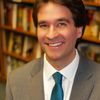
The word "sacred" is applied so ubiquitously that its meaning is seldom consistent, even from one conversation to the next. Why is something sacred? Where is the sacred? When is it sacred? And the most difficult question for many of us who ascribe to a religious tradition, who or what is sacred?
When trying to explain how the term applies to particular texts or Scriptures, many people fall back upon a series of clichés and euphemisms. I will admit to using more than a few of them myself. Something about the nature of the sacred, as we see it in written form or hear elements of it conveyed through oral tradition, can create ambiguity in our use (and even understanding) of the term. It can be difficult to pinpoint exactly what makes a text sacred.
One of the underlying questions that may be a cause for confusion is whether the "sacred" part of our texts comes from the belief that their content and form originate apart from human beings (and instead, with God or in a Divine realm) or with human beings (who themselves have elements of "sacredness" and channel the sacred through a particular text). Conceptions of prophecy and the conveyance of religious text amplify the disparities in our understanding of what "sacred" truly means in relation to the words we hold dear.
To put a finer point on this challenging term, what is it, from the standpoint of respective adherents, that sets apart the Torah, Quran, Bible, Bhagavad Gita, Guru Granth Sahib, or any other text in which one senses the sacred, from the countless other writings in the human canon of narrative?
Tugging at us are the competing forces of universalism and particularism. Is our text distinct from others because the Divine has designated it the sole or central source of ultimate meaning? Is it but one of many works in a spectrum of Divine writings? Or, as I am increasingly coming to think, is a text sacred because of the extent to which the Divine (or as I would put it, the Ordering Force of the Universe) is animated by the human process through which it is discerned?
Though I cannot speak with adequate knowledge about the process of exegesis and interpretation within other traditions, I find beauty to an extent that I would term "sacred" in the rabbinic process. It is this process that defines for me how the Torah is to be understood and gives meaning to the term "sacred" as extrinsic to the written text itself, irrespective of one's views about its intrinsic nature or purveyance. Such is the beauty of the rabbinic process that my questions about the origins of the Torah become secondary to the pursuit of truths evident therein.
If words of the Torah were cloth, the rabbinic tradition unweaves the vestment of our religious text, holds with care the fabric of our narratives and reweaves them with the unmistakable precision of the ethicist, venturing to derive and apply universal values. The new garments are never fully complete, but are woven and rewoven, honed and embellished upon, and personalized by each thinker who delves into rabbinic discussion. Each joins in the rabbinic process seeking to weave his or her own garment of Torah, sacred clothing that approximates truth as one understands it.
Through the process of rabbinic debate and discussion, we become bearers of the intellectual garments that have been passed along and refashioned throughout the centuries. We sew ourselves into the cloth that our intellectual ancestors bestowed upon us. It adorns our humanity.
Debates at times become furious, abrasively reshaping presupposed designs of fabric, and at other moments are softened, providing for a new tassel or stitching anew fabric that transcend time.
In venturing into the eternal weaving and unweaving of sacred text, we ourselves are woven into the fabric of a tradition so ancient that we cannot possibly know its origins with certainty. The question of Divine provenance becomes secondary to the very human and iterative process by which we engage and make evident the sacred in ourselves and our lives.
Humans sanctify themselves not in the passive resonance they feel with stories that transcend time, but in the active engagement and re-crafting of these stories through the questioning of premises, derivation of overarching truths, and a willingness to unweave and reweave these initial narratives in forms that more closely resemble that which we understand to be ultimate meaning.
The sacred, as I see it in the text that is central to my life, is evoked not merely by the text itself, but by the human interaction with it. Whether our religious texts were created by God or by an unending line of thinkers who stitched their earliest forms, it is the human hand that often makes evident the sacredness within them.
This article represents only my own views and does not reflect the positions held by Hebrew College, the Journal of Inter-Religious Dialogue, or any other organizations of which I am a part.
